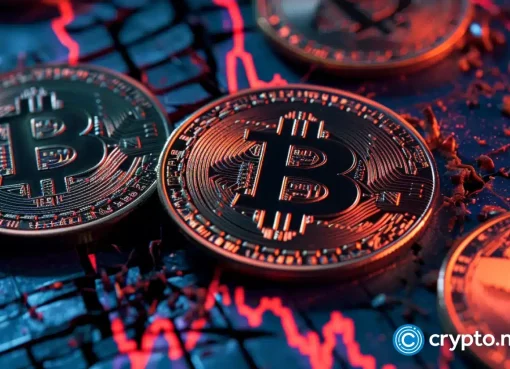In just the last few months, the entire landscape of the crypto industry has changed. Innovation once came from within, with a number of early influencers earning god-like status among the crypto community. In 2019, the industry is marching to a very different tune, with tech companies expanding their influence out of their respective sectors and into the realm of finance.
Telegram’s Telegram Open Network (TON), powered by its own in-house cryptocurrency, Gram, hoped to be the first token-backed product for mainstream use launched by an established tech firm. Just days before the launch date, the hammer of the United States Securities and Exchange Commission (SEC) came down in full force.
Momentum for TON has been building over the past few months and the token distribution set for Oct. 16 was drawing ever nearer. In August and September, Telegram released the TON testnet for both explorer and node software, launched a free wallet service for its 300 million users, and announced a controversial $400,000 bug bounty. Just as everything was falling into place for the company — the SEC stepped in.
SEC issues Gram restraining order
Although many companies have recently launched high-profile cryptocurrency initiatives, TON was scheduled as the first of them to go live for the general public. It seemed that with each passing day, anticipation for the Durov brothers’ latest, secretive project grew. Telegram’s trademark secrecy gave the project an added layer of mystery, building upon the firm’s $1.7 billion ICO in February 2018.
With its competitors like the Facebook-backed Libra bogged down with lobbying and harsh regulation, it almost looked as if Telegram knew something everyone else didn’t. But the last of their luck would soon run out. Just as the final week before TON’s initial token distribution drew to an uneventful close, the SEC took emergency action.
In an Oct. 11 press release, the SEC stated that it had filed an emergency action and restraining order against both Telegram and TON with a federal district court in Manhattan. According to the complaint, the SEC alleges that the sale of Gram tokens had not been registered with the regulator.
The crux of the issue is that the SEC announced it will classify Gram as a security. According to the Securities Act of 1933, all securities must be registered with the commission. On this basis, the SEC declared the sale of the tokens unlawful. Several members of the commission were vocal about their disapproval for TON. Stephanie Avakian, co-director of the SEC’s Division of Enforcement maintained that Gram was illegal:
“Our emergency action today is intended to prevent Telegram from flooding the U.S. markets with digital tokens that we allege were unlawfully sold. We allege that the defendants have failed to provide investors with information regarding Grams and Telegram’s business operations, financial condition, risk factors, and management that the securities laws require.”
Steven Peikin, co-director of the SEC’s Division of Enforcement appeared to imply that Telegram had avoided undergoing the necessary regulatory diligence:
“We have repeatedly stated that issuers cannot avoid the federal securities laws just by labeling their product a cryptocurrency or a digital token.Telegram seeks to obtain the benefits of a public offering without complying with the long-established disclosure responsibilities designed to protect the investing public.”
Due to the tiny snippets of information released by the company along with a great deal of rumors making their rounds of the crypto community, Telegram’s TON has created a huge amount of discussion. As more information became public and the token distribution date drew nearer, several exchanges stepped forward and announced their willingness to host TON.
One of the earliest announcements came in early September from Blackmoon, an exchange registered in the Cayman Islands. Just a few days after, California-based Anchor Labs subsidiary, Anchorage Trust Company, threw its hat into the ring, reporting that it would support institutional custody for Gram, despite not being registered with the SEC. The most high-profile show of support came in October, when major U.S.-based crypto exchange and wallet provider Coinbase announced it will provide custodial support for TON once it goes live for the wider public.
Oleksandr Lutskevych, CEO and founder of CEX.IO, a London-based exchange that also announced it would provide custodial support to TON, told CryptoX that the SEC has surprised everyone with their move, adding that, “The facts outlined in the complaint do not have a strong foundation, as we’ve encountered previously in other SEC cases.” Lutskevych went on to say that while they do not agree with the SEC decision, they share the commission’s core task of protecting retail investors:
“Probably, their step was the only right action in this situation if we view the case from their perspective. Over the past few weeks, the attention to TON has been incredibly high, and it’s quite easy to understand how many tokens will burst out onto the retail market. On the other hand, such an approach brings lots of questions, and I am looking forward to seeing the results of the court hearing and the argumentation of the TON representatives.”
While stressing the importance of complying with legal procedures both within and outside U.S. borders, Lutskevych explained that CEX.IO will still aim to provide custodial services to TON for institutional customers regardless of SEC’s decision:
“This is a standalone licensed activity that has been approved by the regulator within our business plan. We believe that providing custody services for TON investors does not contradict any rules and laws.”
Why did this happen?
Many projects claim to have what it takes to transform the industry and even more have earned the praise of critics across the board. Almost all of these projects share another, more unwelcome characteristic: failing to impress the SEC. The commission has an infamous reputation for a lack of regulatory clarity, along with a hostile approach to cryptocurrency-based projects.
The speed at which the SEC casts its all-important approval varies too, ranging from listless indecision to the explosive and unexpected decision to deny TON at the last minute. One reason that the SEC decided to clamp down on TON may well be due to the way Telegram planned to sell it.
In February 2019, Telegram filed for a “Form D,” which is an application to sell a security with one crucial difference — applicants are not obliged to register with the SEC. Although, the Form D is not without its drawbacks. Applicants using this route need to be aware of the two possible exemptions for getting around an SEC registration: 506(b), the more prohibitive of the two, bars the applicant from advertising the security and restricts sales to accredited investors as well as 35 non-accredited investors. The SEC details the desired qualities of non-accredited investors:
“Each purchaser who is not an accredited investor either alone or with his purchaser representative(s) has such knowledge and experience in financial and business matters that he is capable of evaluating the merits and risks of the prospective investment.”
Telegram, however, filed for the second option — 506(c). Under the requirements of this exemption, the security is permissible only if sold exclusively to accredited investors, while those applying for this exemption are allowed to advertise.
Although the initial sales of Gram tokens would have been made to accredited investors in the initial token offering, the SEC is concerned that these holders might then resell the tokens. Consequently, the commission viewed this as a violation of 506(c):
“Once Telegram delivers the Grams to the Initial Purchasers, they will be able to resell billions of Grams on the open market to the investing public. Telegram and/or its affiliates will facilitate these sales on digital-asset trading platforms. Once these resales occur, Telegram will have completed its unregistered offering with billions of Grams trading on multiple platforms to a dispersed group of investors.”
Chief market analyst at ThinkMarketsFX, Naeem Aslam, told CryptoX that he felt the regulations were clear enough, and supported the SEC’s decision:
“I agree that the SEC doesn’t have everything clearly spelled out but there is a strong framework and if companies are breaking it then they should be held accountable.”
Nischal Shetty, founder of the India-based WazirX exchange, said that he believes Gram is a utility token rather than a security, but he remains positive about the SEC and Telegram coming to a workable solution:
“SEC might probably have issues with the way Telegram probably represented these to potential investors. Nevertheless, I’m sure Telegram and the SEC will sort this out. The Crypto world needs scalable blockchain projects to launch soon for the next step of evolution and TON promises that.”
New York Times tech reporter Nathaniel Popper’s Oct. 12 tweet drew attention to the venture capital companies that participated in Telegram’s $1.7 billion ICO:
“The SEC’s move to shut down Telegram’s crypto project raises questions about the big venture capital firms that gave it $1.7 billion and convinced themselves that it would pass regulatory muster. That includes Benchmark, Sequoia and Lightspeed.”
Telegram responds to investors
Although the SEC declaration of the $1.7 billion ICO as illegal may suggest that Telegram simply failed to follow the correct procedures, a TON letter to investors obtained by CryptoX states that the firm had been trying to get feedback from the SEC for the past 18 months:
“We were surprised and disappointed that the SEC chose to file the lawsuit under these circumstances, and we disagree with the SEC’s legal position.”
Following the red flag from the SEC, a private Telegram channel for TON investors also took action, citing increased regulatory uncertainty. The TON Board announced a temporary hiatus and deleted all previous posts on its Telegram channel, a space created by and for TON investors as well as for prospective holders of Grams.
What do experts think about TON?
Telegram is a company that polarizes opinions. From its disagreements with governments to the secretive ways in which it carries out business, the company both enrages and inspires its audience in equal measure. Decentral Park Capital Senior Research Analyst Elias Simmos told CryptoX that when the project does finally launch, the shockwaves will be felt across the industry:
“To put things in context, the Telegram messenger has more than 500x the active end-users of all the apps running currently on Ethereum. The technology architecture is impressive. On the flipside, it is so ambitious that there are many ways in which it could fail — some of which are failure to decentralize the network sufficiently, failing to attract developers etc. Either way, it is like nothing we have seen before — and it matters.”
WazirX’s Nischal Shetty also believes that TON is set to shake up the crypto space upon its launch, since Telegram is one of the most technically competent teams in the world, “They are also one of the most persistent team, they keep building and improving upon the product. TON has the potential to usher in a new and much needed positive push for the entire blockchain industry.” TON has a potential user base of 250 million once it gets the green light from regulators. Simmos said this could lead to it becoming the platform of choice for decentralized apps (DApps):
“If interoperability plays out as intended, I think TON has a shot to becoming the de facto discovery platform for DeFi and other crypto native Dapps. The bot interface is ideal in abstracting away the complexity of blockchain back ends. It’s definitely too early to call for a ‘Netscape moment,’ but the potential is there.”
Value of TON
Regarding the potential price of the Gram cryptocurrency, Simmos explained to CryptoX that TON could help monetize the valuable Telegram platform while also providing both an attractive opportunity to run validators for investors and a resourceful public utility to the world:
“By participating in the Gram private sale, investors effectively purchased the right to run validators on TON and access a stream of ledger fees, at an attractive price. As for the TON Foundation, with 10% of the Gram total supply under their control, at a price of $2 per Gram, this makes for a $1B coffer. The Telegram Messenger reportedly costs $1M a month to run. […] I see TON both as a play to monetise the messenger, but also as an effort to introduce a public utility in the world; an operating system for payments technology and financial applications.”
However, those estimations may be overstated, as Aslam told CryptoX regarding the indicative value range of $2.1 to $8.0 per Gram published by ATON Research:
“Once a token starts trading on an exchange that’s when the conversation truly begins. For the time being sub $2 could be something that we’re really looking at. I think that would be something more justifiable. In terms of a range. I’m really looking at $1.5–1.8 rather than $2.1.”
In the last year, stablecoin projects have erupted across the industry, with Facebook’s Libra project also looking to launch soon. Regarding Telegram’s decision not to peg Gram to any particular fiat currency, eToro Senior Market Analyst Mati Greenspan told CryptoX that letting the market decide the price could pay off for the company:
“It makes a lot of sense to let the market decide what the price should be. This way they don’t need to waste time and energy managing a reserve and will likely face less scrutiny from both regulators and users.”
ThinkMarketsFX’s Aslam said that although it is indeed a crypto project being launched by a large, reputable tech firm, it’s not possible to compare TON too closely with its competitors:
“It’s very different because Libra backed by different currencies. That is at least what they are trying to do. Libra is a coin which has gathered enormous amounts of attention on the floors of the SEC, from the federal reserve bank, the european central bank. It’s not apple for apple in terms of comparison. It [TON] is still coming from a major firm introducing its own crypto so from that perspective it is a positive development from the market.”




